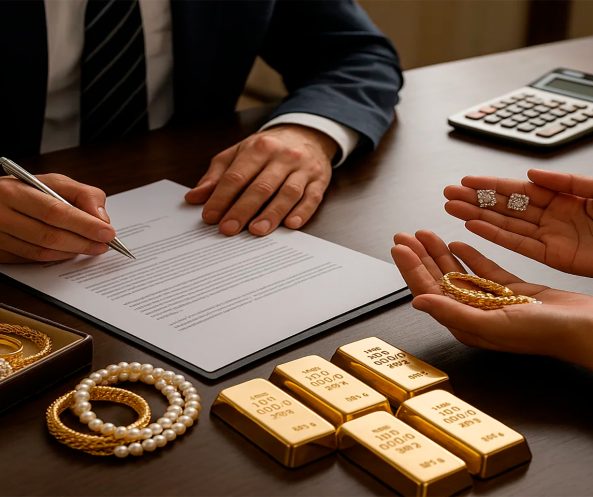Gold and Silver Investment Scams: When Pyramid Schemes Pretend to Be Real Market Opportunities
Pyramid Schemes Disguised as Metal Investments
Precious metals like gold and silver have always attracted investors looking for security. But where there is trust, there are also scams. In recent years, fraudsters have begun disguising pyramid schemes as legitimate metal investment opportunities. They lure people with promises of guaranteed returns, secure storage, or exclusive access to “special markets.” On the surface, these offers sound convincing, but the structure underneath often has more in common with a recruitment chain than with real investing. Knowing how to spot these schemes can protect your savings and keep you from becoming part of someone else’s payout plan.
How Pyramid Schemes Hide Behind Metal Investments
The attraction of metals makes them a perfect cover for pyramid schemes. Gold, silver, and platinum are trusted names—few investors stop to question whether they are really being purchased. Fraudulent companies use glossy websites, photos of bullion, and talk of “allocated accounts” or “offshore storage.” In reality, little or no metal exists. Instead, the business model relies on recruiting new participants whose money is used to pay earlier investors. This cycle continues until recruitment slows and the scheme collapses, leaving late joiners with nothing. Unlike legitimate investments, where value comes from market prices, these structures depend entirely on inflow of new funds, not on real assets.
Common Warning Signs
- Guaranteed returns on gold or silver—real metals fluctuate with the market.
- Pressure to recruit new investors as part of the deal.
- Unclear details about where metals are stored or how they can be redeemed.
- Bonuses offered for bringing in friends and family.
Differences Between Real and Fake Investments
Separating fraud from legitimate investment requires attention to detail. Real investments in metals involve transparent pricing, secure storage with recognized providers, and direct ownership of bullion or shares in regulated funds. Fraudulent offers often avoid independent audits or certificates of ownership. They use vague terms like “exclusive programs” or “private pools” rather than clear documentation. A genuine investment allows you to see where your assets are held, sometimes even with serial numbers for bars. A scheme offers only promises and paperwork designed to distract from the absence of real assets. The ability to verify ownership is the key difference.
Quick Comparison
| Aspect | Legitimate Metal Investment | Pyramid Scheme |
|---|---|---|
| Returns | Market-driven, variable | Guaranteed, fixed |
| Ownership | Physical bullion or regulated fund | No real assets, vague promises |
| Recruitment | Not required | Central to the model |
| Transparency | Audits, certificates, clear storage | Hidden, unverifiable |
Why People Fall Into the Trap
Even experienced investors can be caught off guard. Fraudsters know how to exploit fear and greed. They highlight gold’s reputation as a safe haven, then promise to make it even safer with “guaranteed” growth. They show testimonials of early participants who appear successful, masking the fact that these gains come from later investors’ deposits. Social pressure is another tool—many victims are introduced by friends or relatives who believe they have found a rare opportunity. This personal trust makes it harder to say no, even when the details do not add up. Psychological tactics, not just financial ones, drive these schemes.
Psychological Hooks
| Tactic | How It Works |
|---|---|
| Scarcity | “Limited slots available” to create urgency |
| Authority | Use of fake experts or glossy brochures |
| Social proof | Testimonials from “successful” investors |
| Fear of missing out | Pressure to join quickly before prices rise |
Protecting Yourself From Fraud
Protection starts with skepticism. If a deal promises guaranteed profits from metals, it is almost certainly fraudulent. Always demand proof of ownership, such as serial numbers for bullion or account statements from recognized storage providers. Verify that the company is regulated and check whether its funds are audited by third parties. Avoid schemes that require recruitment, bonuses for referrals, or complex structures that obscure where the money goes. Real investments may be slow and sometimes dull, but they are transparent and verifiable. The moment a proposal feels secretive or too good to be true, it deserves careful scrutiny.
Steps to Take
- Research the company and verify regulatory licenses.
- Confirm how and where metals are stored.
- Avoid investments requiring recruitment for returns.
- Be cautious of offers made only through personal networks.
The Future of Detecting Metal Investment Scams
The fight against pyramid schemes disguised as metal investments is far from over, but the future may tilt in favor of investors. Regulators in multiple regions are beginning to use technology to spot fraud earlier, analyzing transaction patterns and cross-border fund movements that reveal recruitment-driven structures. Artificial intelligence tools could soon flag companies promising unrealistic returns, while blockchain-based tracking systems might make ownership of gold and silver easier to verify across global markets. These innovations could shrink the space in which fraudsters operate, making it harder to sustain schemes for long periods. Yet as protections grow, scammers will also adapt, using more sophisticated websites, digital marketing, and even fake online vaults to lure victims. Awareness and regulation must move together to keep pace with these evolving threats.
Blockchain and Transparency
Imagine a future where every legitimate bar of gold or silver is registered on a public blockchain ledger. Investors could instantly check if their purchase is genuine and traceable, while lenders and regulators could confirm collateral at any time. Pyramid schemes would struggle to survive in such an environment, as false claims of ownership would be easily exposed. This scenario highlights how technological innovation, combined with stricter oversight, could significantly reduce fraud risks in the metals sector.
Conclusion
Pyramid schemes disguised as metal investments exploit trust in gold and silver to lure people into financial traps. They promise certainty where markets cannot, hide behind jargon, and depend on constant recruitment to survive. Distinguishing them from real investments requires a critical eye, attention to documentation, and refusal to believe in effortless profits. By asking the right questions and refusing to be rushed, investors can protect themselves. Metals remain a valuable tool for diversifying wealth, but only when purchased through transparent, regulated, and verifiable channels—not through promises that shine brighter than the truth behind them.












 Financial Analyst & Luxury Asset Lending Specialist
Financial Analyst & Luxury Asset Lending Specialist